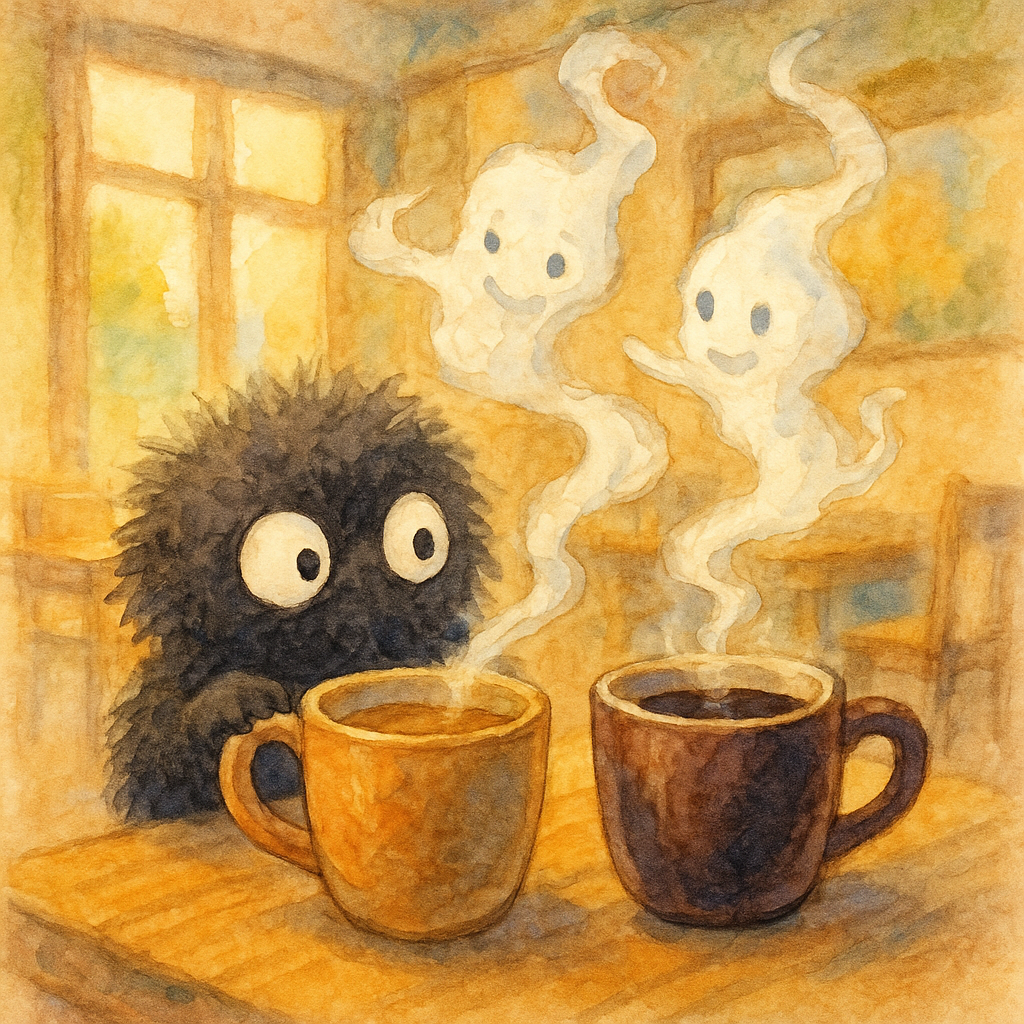
Hojicha vs Coffee: Caffeine, Acidity, Flavor – A Complete Guide
If your morning “rocket fuel” sometimes leaves you jittery, acidic or wide-eyed at midnight, roasted Japanese Hojicha could be the gentler—but still delicious—alternative you’re craving. In this 2 000-word deep dive we stack Hojicha against coffee on five fronts: caffeine dose, acidity & stomach comfort, flavor notes, environmental footprint and step-by-step switching strategies. By the end you’ll know exactly when to reach for a smoky cup of Hojicha and when your trusty coffee still shines.
Caffeine chart: how much buzz do you really get?
Hojicha is renowned for its mellow energy profile. Roasting degrades a portion of caffeine, and twig-heavy blends (known as kukicha) start with less to begin with. The result is a brew that can be sipped late at night without sabotaging sleep. Coffee, in contrast, packs a pharmacological punch designed to keep baristas and deadline warriors in business.
| Beverage | Caffeine (mg) | Typical brew time |
|---|---|---|
| Hojicha (loose-leaf, 90 °C, 2 min) | 7–20 | 2 min steep |
| Espresso | 63 (per 30 ml shot) | 25–30 s extraction |
| Drip filter coffee | 95–165 | 4 min drip |
| Cold brew coffee | 140–220* | 12 h steep |
| Decaf coffee | 2–5 | 4 min drip |
| *Long infusion concentrates caffeine; dilution varies. | ||
Notice the delta: even the strongest Hojicha rarely tops 20 mg—barely one-third of a typical decaf espresso. The difference matters physiologically. Under 30 mg, most adults feel perceptible alertness without raised cortisol or disrupted REM sleep. Coffee’s 95-plus mg is ideal for sprint productivity but can amplify anxiety in sensitive drinkers.
Acidity & stomach comfort
Coffee’s signature bite comes from chlorogenic and quinic acids formed during roasting. Average pH hovers around 5.0; cold brew is slightly higher but still acidic. Hojicha registers near-neutral at pH 6.8–7.1. Real-world anecdote: customers prone to acid reflux often report zero heartburn when replacing their afternoon Americano with a roasted-tea latte.
Less acidity isn’t the only gut-friendly trait. Hojicha contains softer tannins than black tea and far less oil than coffee, meaning fewer compounds that stimulate gastric acid secretion. Brewing at 90 °C instead of boiling protects catechins from oxidizing into harsh polyphenols, keeping each sip smooth and stomach-safe.
Flavor notes: smoky, nutty, caramel vs roasty-bitter bean
Flavor is subjective yet crucial for habit change. Hojicha’s roast transforms grassy Japanese green tea into autumnal comfort: think toasted hazelnut, campfire caramel and subtle cacao. Pyrazines created in the drum roaster add a sweet-smoke nose often compared to light drip coffee—but without the bitterness.
Coffee’s tasting wheel is larger—from fruity Ethiopian naturals to chocolatey Sumatran dark roasts. Both beverages share Maillard-reaction complexity, but Hojicha’s base leaf sugars and amino acids steer the cup toward gently sweet umami. This makes it exceptionally versatile in lattes, baked goods and even savoury broths (try this creamy iced Hojicha latte if you need proof).
“Roasting reduces caffeine, bitterness and astringency compared to non-roasted green teas, making Hojicha easier for pregnant women and children to drink.” — Journal of Nutritional Science & Vitaminology (2024)1Environmental impact
Sustainability matters as much as flavour today. Coffee is a tropical crop—often grown at the expense of high-biodiversity cloud forests—and its average carbon footprint sits at ~15 kg CO2e per kg of green beans exported to the UK. Hojicha, derived from Camellia sinensis leaves grown in temperate Japanese uplands, generally produces ≤1 kg CO2e per kg of processed tea. The lighter product weight per serving (2–3 g leaf versus 15 g ground coffee) further reduces shipping emissions.
Water use also tilts in tea’s favour: a standard cup of coffee consumes ~140 L of water when farm inputs are counted, while a cup of tea averages ~35 L. Packaging differs too—tea pouches travel flat and qualify as “large letter” mail in the UK, trimming logistics fuel compared with rigid coffee tins.
How to switch from coffee to Hojicha (without caffeine withdrawal)
- Assess your current intake. If you drink 3 mugs (≈300 mg caffeine), aim to replace one mug every three days. A measured taper prevents headaches.
- Mimic ritual. Brew Hojicha in the same French press or pour-over cone you love; the familiar workflow eases psychological cravings.
- Pair with milk first. A creamy Hojicha latte replicates coffee’s mouthfeel and satiates dairy-driven expectations.
- Recharge strategically. Save coffee for pre-workout or tight deadlines; use Hojicha for routine hydration. Your total weekly caffeine will plummet while productivity stays intact.
- Stock up smart. Keep a pouch of powdered Hojicha on your desk for 30-second whisk-and-sip convenience. (See CTA below.)
Ready to taste the difference?
Grab our barista-grade Hojicha Powder and craft lattes in seconds. Ships UK-wide in letterbox-friendly eco-pouches.
Conclusion
Hojicha won’t replace coffee for everyone, but it offers a compelling low-caffeine, low-acid complement that still satisfies with true roasted depth. Switching even one daily cup trims hundreds of milligrams of caffeine per week, soothes sensitive stomachs and lightens your personal carbon footprint—all while expanding your flavour repertoire. Give the smoky leaf a chance; your body (and the planet) may thank you.
FAQ
- How is Hojicha roasted?
- Producers drum-roast steamed green tea at 150–200 °C for several minutes, caramelising sugars and breaking down caffeine.
- Does Hojicha stain teeth like coffee?
- Only minimally. The lighter pigment wash and lower polyphenol load mean fewer tannins bind to enamel, though any dark beverage can cause slight staining over time.
- Can I cold brew Hojicha?
- Absolutely. Steep 8 g of leaf in 1 L of cool water for 6–8 hours in the fridge. The result is sweet, almost caramel-like and virtually caffeine-free.
1. Effects of green tea and roasted green tea on human responses to stress. J. Nutr. Sci. & Vitaminol. 72 (4), 2024. DOI:10.3177/jnsv.72.321